Interview with Șerban Savu and Ciprian Mureșan on the exhibition What Work Is, The Romanian Pavilion at the 60th International Art Exhibition – La Biennale di Venezia 2024.
Diana Marincu: Șerban, thinking about some of your older paintings that I already know and admire and considering the information received from the team of the project, I understand that what you are still interested in—and this stands at the base of your proposal for Venice—the relationship between work and free time, labor and rest, productivity and leisure, captured in the context of the Romanian society of today. Using a set of visual hallmarks borrowed from the language of socialist realism, it seems that you are painting what “got away” unpainted and was not at all represented in socialism – the very intervals between work and now, you apparently come to fill in these “historical” or “ideological” gaps, am I right? How did you work out this relationship between what already existed as public space representation and the unseen side of labor?
Șerban Savu: You made a very good observation. Indeed, it is an area that was overlooked in the official painting. The reference is clear: I took certain themes from socialist realism, such as the ideologically charged heroic images, which were though completely cut off from reality. It was the idealized image of a utopian world, distorted to serve propaganda purposes. I was interested in looking at the people of today from this perspective—but through a more faithful lens—trying to catch their real attitudes towards work and the image of non-ideologized work. There are many scenes with people working in their spare time or steering clear of work during working hours in an anarchic dance that escapes any productive system. These people are looking to find their freedom.
D. M.: The same labor norms no longer apply as it was the case in communism, and we are witnessing a situation where two areas “contaminate” each other. “The punch clock” is out, “competition” moves in.
Ș. S.: This anarchy between two worlds opens gaps where new ways of resistance and finding one’s meaning, identity, and freedom emerge. Sleep is such an escape into an intimate, private world where you are vulnerable and innocent, but also free. Or activities like working in your spare time, cultivating the land for pleasure, gardening vegetable on the small plots around the apartment blocks. They are also a perpetuation of an older lifestyle, which mixed the rural and the urban and was populated by a hybrid character.
D. M.: The gardens between the apartment blocks are gray areas where identities merge.
Ș. S.: In the neighborhoods, on the periphery, the urban and the rural coexist, they don’t rule each other out. Everything is possible on the periphery. It is a place that can harbor the future of a society, of a city.
D. M.: Ciprian, you are accompanying Șerban as a dialogue partner and it is very interesting how the both of you meet in the same subtle critique of the capitalist metabolism that swallows many things unchewed. The Savage Collective, in the book The Tragedy of the Worker. Towards the Proletarocene, raises the following question: what if the workers who set out to conquer the world have nothing left to conquer? What if the world is already lost? They are discussing the “proletarianization” of the majority of the world’s population that went hand in hand with the destruction of the planet. And so, maybe there is not much left of the proletarian dream. What do you think is left to the worker? What can he, whose hopes for the better have been dashed, still do today? His struggle will not “cure” the current climate crisis… . In the mosaic True Nature it seems that the Proletarocene has come to face the Anthropocene.
Ș. S.: I don’t know to what extent the proletarian still exists per se. It is after all more an ideological term than a reality, with a significantly much shorter history than labor, whose existence cannot practically be separated from that of mankind, and which is very unlikely to disappear. As a human activity, work evolved and is constantly evolving, at times in directions that are difficult to predict, fulfilling over centuries different roles in society, not just the world-conquering or constructive ones. Sometimes, these roles can be anarchic or evasive, or simply recreational.
C. M.: The worries about the future of the worker go back a long way, even if the theories kept changing. Take, for example, the fear that the workers, or at least their means of making a living, would become endangered as they were being replaced by the machines brought by industrialization. Yet people continue to work and live off their work.
D. M.: Initially, the title of the project, What Work Is, disconcerted me, and I was wondering why it was work and not labor. But then I realized, after reading more about the project and knowing your body of work, that this is how it should be.
Ș. S.: Indeed, it is not the labor I am interested in, it is the work. I am not interested in the ideology of the historical term.
D. M.: I would like to reflect a little on Philip Levine’s lines (“You know what work is – if you’re / old enough to read this you know what / work is, although you may not do it. / Forget you. This is about waiting, / shifting from one foot to another”). I am intrigued by this moment of waiting, what are your characters waiting for? Are they before or at the end of a “necessary” utopia? Sleep is also an important motif in your paintings, yet an extremely “anti-heroic” one, to say the least. You cannot be a hero while you are sleeping, can you? And likewise, you cannot be productive. The characters thus elude the methods of measuring productivity.
Ș. S.: You are right. Sleep is evasion, it is entirely non-heroic, and simultaneously, an attitude of maximum vulnerability and outwardly innocence. The sleeping man is by definition innocent, extremely fragile, and at the same time, subconsciously free. It is a moment of liberation from and eluding any productive system. It is anarchic. The way the world is built today, sleep is all we have left, the last stand of freedom unseized by capitalism, setting aside some dystopian films where sleep has as well been hijacked by advertisers and the like (a possible reference to Inception, directed by Christopher Nolan, AN). For me, sleep is the opposite of what the socialist realism stood for, at the other end of meaning.
D. M.: Are your characters disillusioned or drifting? I am also hinting here at the title of your book (Șerban Savu, Drifting, 2019, IDEA Design & Print, Cluj).
Ș. S.: They are drifting. I don’t think these people have even had the time to think about disillusionment as the leitmotif of their lives. Rather, they have been looking for ways to adapt to change, to understand the world they live in, to find new opportunities in a free world where they are no longer told what to do but at the same time, they are carried along by the tide of time and history, which they do not control. They are dragged along by history. They try to find their place and meaning in the middle of this stream.
D. M.: Let’s talk about the scale models presented here and about architectural typologies. Ciprian, you have also worked with scale models in your previous artistic practice and have been interested in the urban mise en scène, the social aggregation, the pockets of freedom and normativity. How did you choose the buildings, and what are the symbolic paths they outline? I noticed that the “school” (as a heterotopia) is missing, but I suppose Fabrica de Pensule might as well stand in for it.
C. M.: It is true, I have worked with architectural models before but I included them in my practice for other reasons. Șerban had to resort to the scale model as a means of expression because it was too expensive to make large mosaics. Was there enough money, these works could have been produced on a large scale. In 2009, he had an exhibition in Berlin where he exhibited for the first time a medium-size mosaic and a few smaller ones. Then he thought the mosaic technique would be appropriate for making a public work, and so Raluca Voinea and he tried to find funding for a project in 2010, however without any success. Later, for his exhibition at MNAC (The National Museum of Contemporary Art, Bucharest), there was a discussion in 2020 for a mosaic on the façade of the Anexa building on Calea Moșilor, but again, for financial reasons, it was not finalized either. That is how Șerban came to the scale models solution. But this series is not completed, it is a work in progress. Șerban didn’t necessarily imagined them as a whole, as a single artwork. It was something that happened progressively. Firstly, there was the apartment block where he grew up.
Ș. S.: Then, and as an answer to your challenge, Cipri, I made the other three for Venice.
C. M.: The second one was the archaeological site, which was also presented in the exhibition The Twist. Five Provincial Stories from an Empire, curated by Călin Dan and Celia Ghyka at Kunsthalle Bega. But they were not choices that ticked off symbolic categories.
Ș. S.: They were personal, intimate choices. The block where I grew up, the factory where I had my studio, archaeology that has been fascinating me for years.
C. M.: On the one hand, they are buildings related to his personal history and on the other hand, invented scenes, the so-called capricci. It is interesting to work with fiction, to build the scene of a future historical discovery. But then again, I feel he isn’t done with this direction.
D. M.: Free time has become the new paradigm of salvation – the increasing amount of free time will allegedly eradicate anxiety, neurosis, unhealthy eating habits, and fear in general but at the same time, we are prone to fall into all the traps of self-help.
Ș. S.: Actually, this is something that is not featured in my paintings – the free time taken up by capitalism and turned as well into a business. It is a monster that gratuitously consumes communities, resources; people tick off and relax following some templates and then make posts on social media. I, for one, don’t find any “pictorial” potential in this reality. I am interested in a different type of human mechanism, a wheel that spins out of habit and inertia, not fueled by not the promises of “salvation”.
Utopias that become the ideologies of totalitarian states undoubtedly lead to destruction and barbarism. What we should learn from history is to keep the right balance between ideas and to be aware that any exaggeration on one side unbalances the other. In my opinion, finding this balance between utopian ideas would be the ultimate utopia – the golden mean, aurea mediocritas.
D. M.: At the Pavilion, we will see a huge polyptych with a series of paintings, around forty, spanning almost twenty years of work. In older paintings such as The Young Guardian, Renovations, House of Prayer, Saint Christopher, you proposed a very interesting overlap between religion and communism, which you recently revisited in the mosaic of the ruined church. Presently, you are adding new layers to your practice– consumerism, self-help-ism, ecology, etc. How does the “cosmogony of work” you have been working on for so many years look different now?
Ș. S.: The local capitalism we are experiencing now in Romania inevitably comes with many of the features of global capitalism and with some added distinct characteristics. But the most acute, painful, and problematic one is ecology. It is obvious that if we think of how the society of today works, the only likely future looks very grim. Starting with the 1960s, we have been made aware of the outcomes of pollution, of global warming, etc., and some actions have been taken, yet without any notable results. Nothing makes me believe that the current measures would eventually work. Unless a solution is quickly found, the situation will only get worse, and we will have to face and live with many environmental catastrophes. It seems there is no escape from this destructive circle. I feel that we are living at the apogee of a civilization.
D. M.: And how do you think this entire context, full of tensions, affects the profile of the “new man”? That new man you have painted for a long time and tried to find in order to work out the relationship between his utopian projection and the reality of his everyday life.
Ș. S.: Insofar as he ever existed, the new man has disappeared or is on the verge of extinction. He is a historical figure, but that history is coming to an end, and he is becoming less and less present.
D. M.: Because he was connected to the transition and that gray interval between two phases?
Ș. S.: Things are different today than they used to be 15 years ago. The character between the two worlds is starting to disappear as new generations relate to communism the same way we relate to the interwar period – to them, it is history. They live in a different time; they are no longer anchored as we are to that period. That is why this character who aspired to be the “new man” is disappearing.
D. M.: Now, if you happen to come across him, it strikes you immediately. He is something of a rare bird.
Ș. S.: Yes, exactly, he is still out there, but only in small numbers.
D. M.: I have always been fascinated by your allegorical or self-referential paintings, where we also see a kind of ars poetica and a reflection on the definition of painting. Paintings such as Abstract Composition or The Allegory of Painting or The Plowman of the Universe. There’s something grand in mundane gestures. You know you are in the presence of a mystery of creation, but you only face it obliquely.
Ș. S.: Indeed, it is a recurring theme in my paintings but in fact, it is a recurring theme in art history. We have the famous examples of Velásquez, Las meninas, or Vermeer, The Allegory of Painting, in which the artist represented himself alongside the motifs he painted. In my paintings, the artist’s place is taken by ordinary people, by workers, utilitarian climbers, and so on. It is a personal vision of the artist’s role in the society and how art can be made today.
D. M.: I am currently reading Georgi Gospodinov’s Time Shelter, and one of the questions the book raises is: “When does everyday life become history?” I think it is happening right in front of our eyes. And the motto of the book is: “All real people in this novel are invented, only the invented ones are real.” This again makes me think of your paintings, your people are more “real” than the people on the street. Fiction, art have the gift of sometimes being more truthful than reality.
Ș. S.: The artist transforms people into emblematic characters, synthesizing some features and making them more visible and therefore, more real. Reality is, of course, much more complex and difficult to analyze. The artist draws out of reality what interests him, and that’s why everything seems so consistent. The artist makes sense of reality, he makes it more palatable, and we can approach and understand it. Through art, you get to a truth, yet a truth that only serves you personally. It is not an objective truth. It can teach you things, but they are much “grayer” things than the objective truth.
D. M.: It teaches you more about yourself than about the outer world.
Ș. S.: Yes, this is a major difference.
D. M.: Ciprian, tell me what you will be showing at the Romanian Cultural Institute. From what I understand, it will be a work-in-progress.
C. M.: We start from a mosaic inserted on one of the scale models (True Nature) and enlarge it. We want to turn that space into a manufacturing workshop similar to the small Venetian artisan businesses of working in wood, glass, etc. During the seven months of the Biennale, successive teams of two people will alternatively work on the making of the mosaic.
D. M.: So, it will be like a partial viewing.
C. M.: We will be exhibiting the completed parts as we progress, along with all the internal architecture of a real art studio: sketches, tools, other working materials, which the public may not normally have access to. The making of the mosaic will in itself be a real performance.
D. M.: What will happen to the mosaic in the end?
C. M.: We want to donate it to an institution in Chișinău to be installed in the public space. It would make a beautiful circle, which would be closed in this way, as Șerban’s practice was often inspired by public works from the Republic of Moldova. Chișinău, which has a long tradition of monumental mosaics, unfortunately faces today many problems regarding their restauration and preservation. We want to add one more to the existing ones, very much hoping at the same time that the necessary funding for their conservation will be found.
Ș. S.: In fact, we would be donating a mosaic antithetical to the socialist-realist ones featured in the background of some of my paintings. It would be something symbolically beautiful. Especially considering the times the Republic of Moldova is now crossing, focusing more on the future, and less on the past. What is more, many of the mosaicists are Moldovan, so it would be like giving something back in the form of their work. It would no longer be work spent “abroad”, as usual, but work returning to Chișinău.
Translated by Camelia Diaconu
POSTED BY
Diana Marincu
Diana Marincu is a curator and art critic, member of AICA and IKT, Artistic Director of Art Encounters Foundation in Timișoara. Her recent exhibitions include: At the edge of the world (co-curator: C...
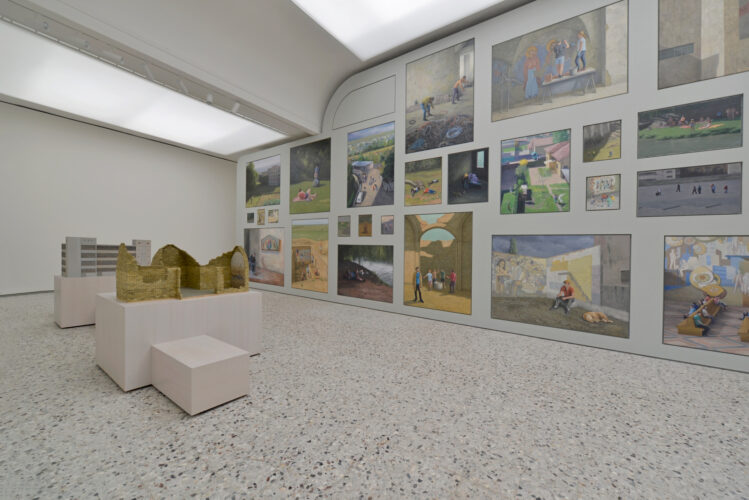

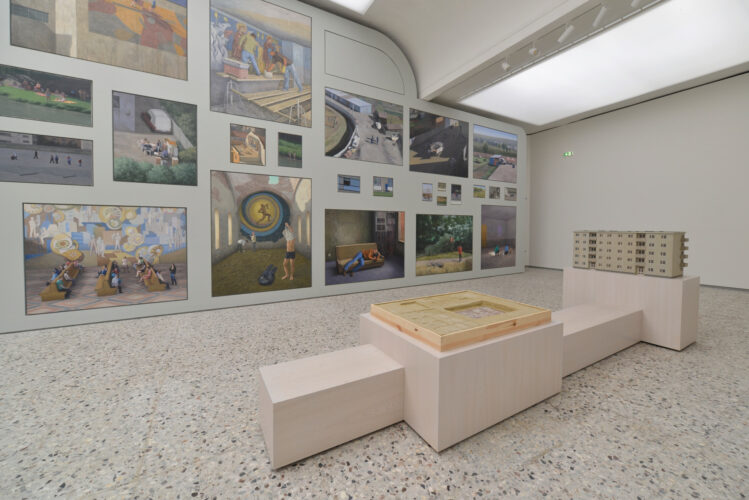
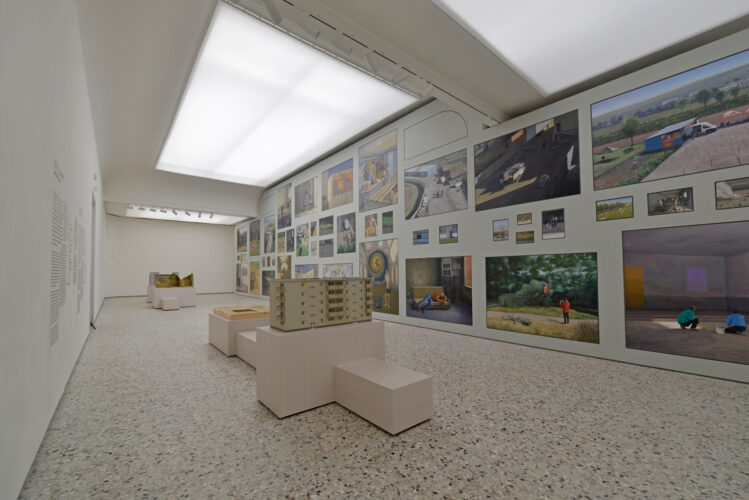
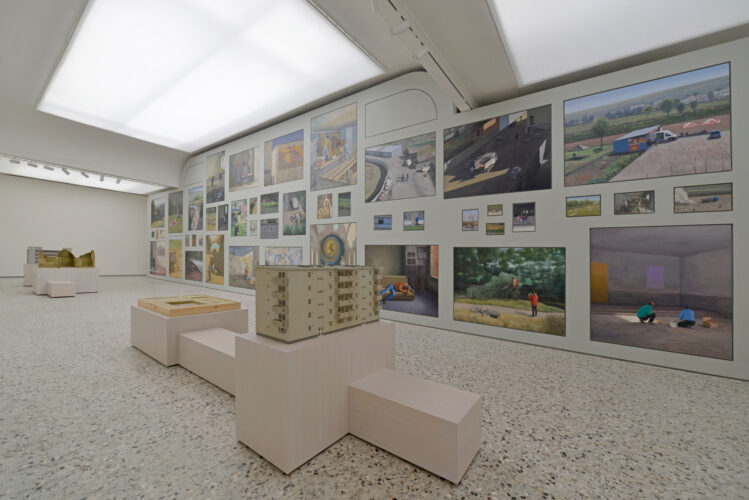
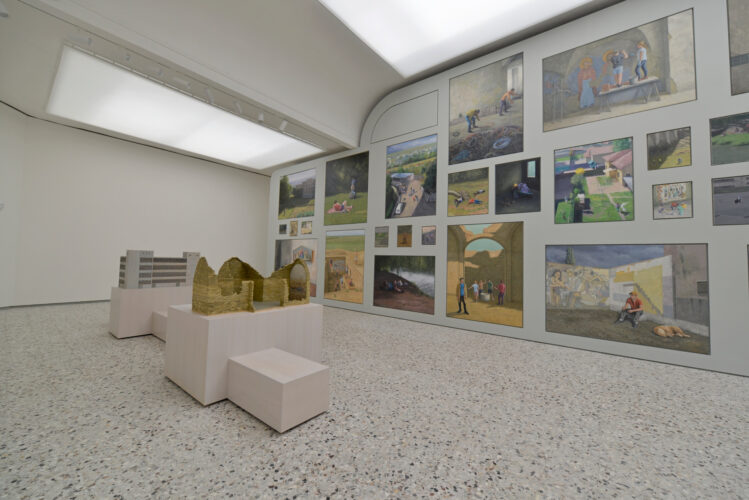

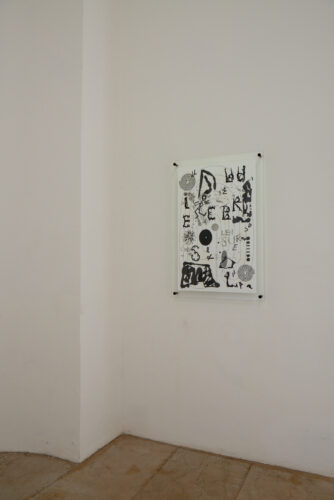
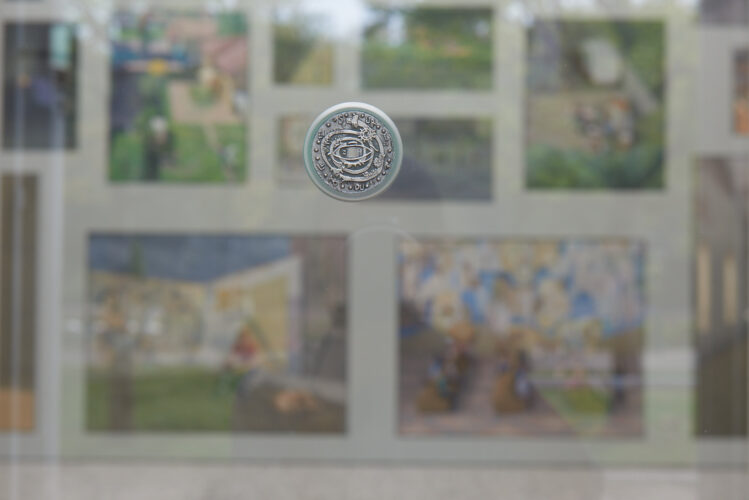
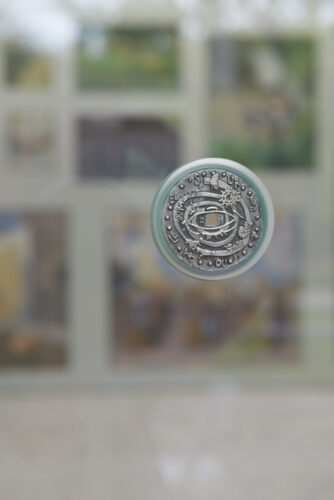
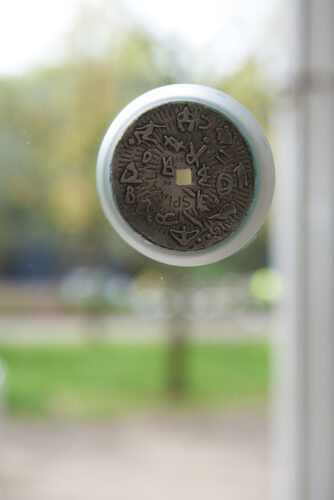
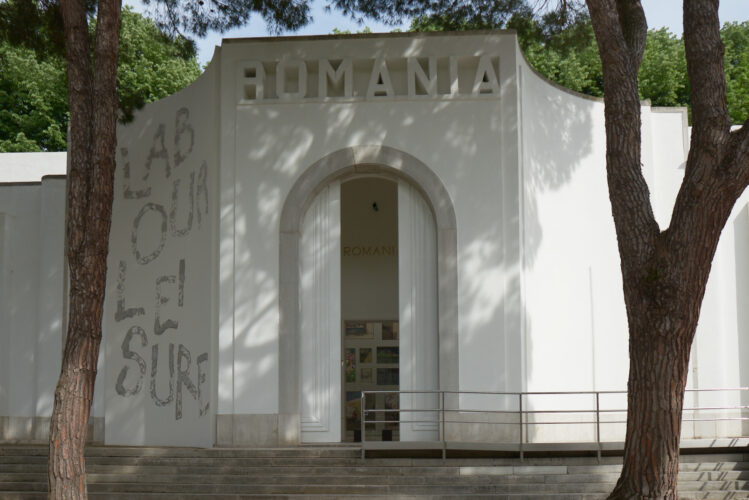
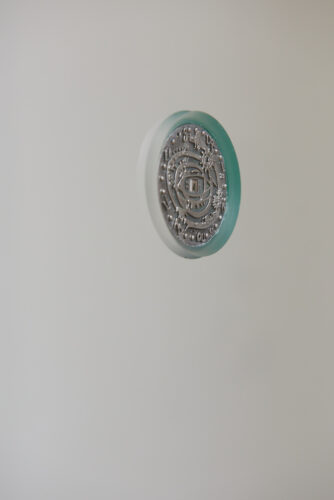

Comments are closed here.